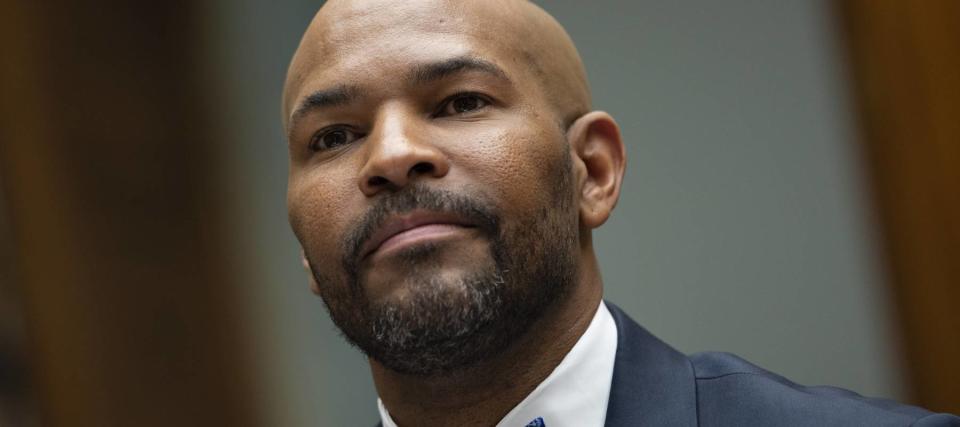Ex-US surgeon general slammed America's 'broken' health system following a $5K ER bill due to dehydration

A former U.S. surgeon general has slammed the nation’s health-care system after he was billed nearly $5,000 — after insurance — for a quick trip to an emergency room (ER) while suffering from dehydration.
Dr. Jerome Adams, who served as the highest ranking doctor in the U.S. from September 2017 to January 2021, shared his despair over America’s “broken” health care system on X (formerly known as Twitter).
Don't miss
Rich young Americans have lost confidence in the stock market — and are betting on these 3 assets instead
Commercial real estate has beaten the stock market for 25 years — but only the super rich could buy in. Here's how even ordinary investors can become the landlord of Walmart, Whole Foods or Kroger
Car insurance rates have spiked in the US to a stunning $2,150/year — but you can be smarter than that. Here's how you can save yourself as much as $820 annually in minutes (it's 100% free)
“Recently had an ER visit for dehydration while out of town. Received some labs and 3 IV bags. Here's the bill- AFTER insurance,” he wrote, alongside a photo of his Mayo Clinic balance of $4,896.43.
Medical expenses frequently rank as one of the top five reasons for bankruptcy in the U.S., as Adams noted in a follow-up post: “Yes folks. THIS is America. “Land of the free, and home of the medical bankruptcy!”
'Financially crippling for most Americans'
These days, Adams, 49, campaigns for more equitable access to health care and better opportunities for Americans to be healthy.
He claims on his website he has “experienced first hand” the nation’s “problems with healthcare access and equity” after growing up with severe asthma and living almost two hours from the nearest pediatric specialty hospital.
While the cost of health care may not have been Adams’ top concern as a child, he realizes as an adult it can be a major pain point for American families.
“While I can manage this, even as a physician, a $5k surprise bill is unsettling, and such an expense is financially crippling for most Americans,” Adams wrote on X.
He explained how he found “relief” in the billing options available through the Mayo Clinic, where he could break the mega bill down into a “more manageable $1632.15 per month plan.” But even that sum would prove debilitating for the vast majority of Americans.
Read more: The US dollar has lost 87% of its purchasing power since 1971 — invest in this stable asset before you lose your retirement fund
Drowning in medical debt
Adams, who is currently a distinguished professor and the director of health equity initiatives at Purdue University, frequently highlights the “staggering” extent of medical debt in the U.S. on social media.
In a Feb. 20 post on X, he wrote: “20+ million Americans are submerged in a staggering $220 billion of medical debt. Shockingly, individuals with disabilities and Black Americans face double the burden. This isn't just a medical and economic crisis, it's a moral imperative.”
He was citing a Health Exec article that breaks down U.S. medical debt based on data from the Census Bureau’s Survey of Income and Program Participation.
The data — analyzed by researchers Shameek Rakshit and Cynthia Cox, from the nonprofit Peterson Center on Healthcare in New York City and KFF — revealed that 20.4 million Americans have unpaid medical bills totaling more than $250 and almost a quarter (5 million people) owe between $2,001 and $5,000.
Furthermore, a shocking 2.7 million Americans are carrying between $5,001 and $10,000 in medical debt, and nearly 3 million Americans are drowning under unpaid medical bills of $10,001 or more.
Health insurance
While venting about his large medical bill on X, Adams offered a response to those “curious” over whether he chose the “wrong” health insurance plan.
He revealed that he is insured under Anthem’s Premier consumer-driven health plan (CDHP) — a type of plan he claims is “recommended for … healthyish, middle to high-income earners.”
Anthem describes CDHPs as high-deductible plans where a portion of the health care services are paid for with pre-tax dollars via a health savings account (HSA). They have higher annual deductibles and out-of-pocket maximums than traditional health plans — with a tradeoff of paying lower premiums each month.
“The bottom line is high deductible plans are the least worst option for most people in a broken system,” Adams concluded. “But health care coverage in the US is a gamble and the house always wins. I didn’t drink enough water while traveling and I crapped out. Again, this is America.”
What to read next
Car insurance premiums in America are through the roof — and only getting worse. But 5 minutes could have you paying as little as $29/month
Thanks to Jeff Bezos, you can now use $100 to cash in on prime real estate — without the headache of being a landlord. Here's how
Millions of Americans are in massive debt in the face of rising costs. Here's how to get your head above water ASAP
This article provides information only and should not be construed as advice. It is provided without warranty of any kind.
